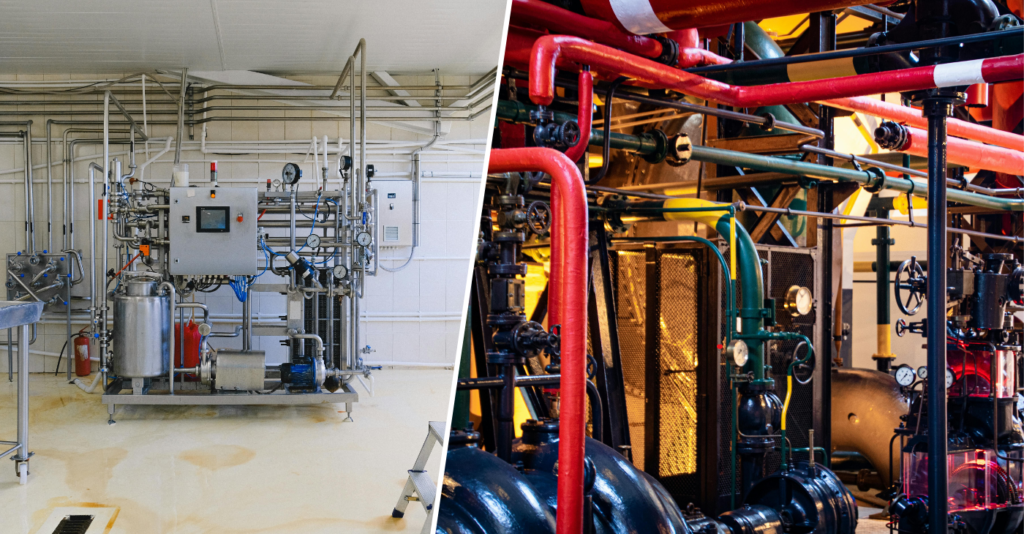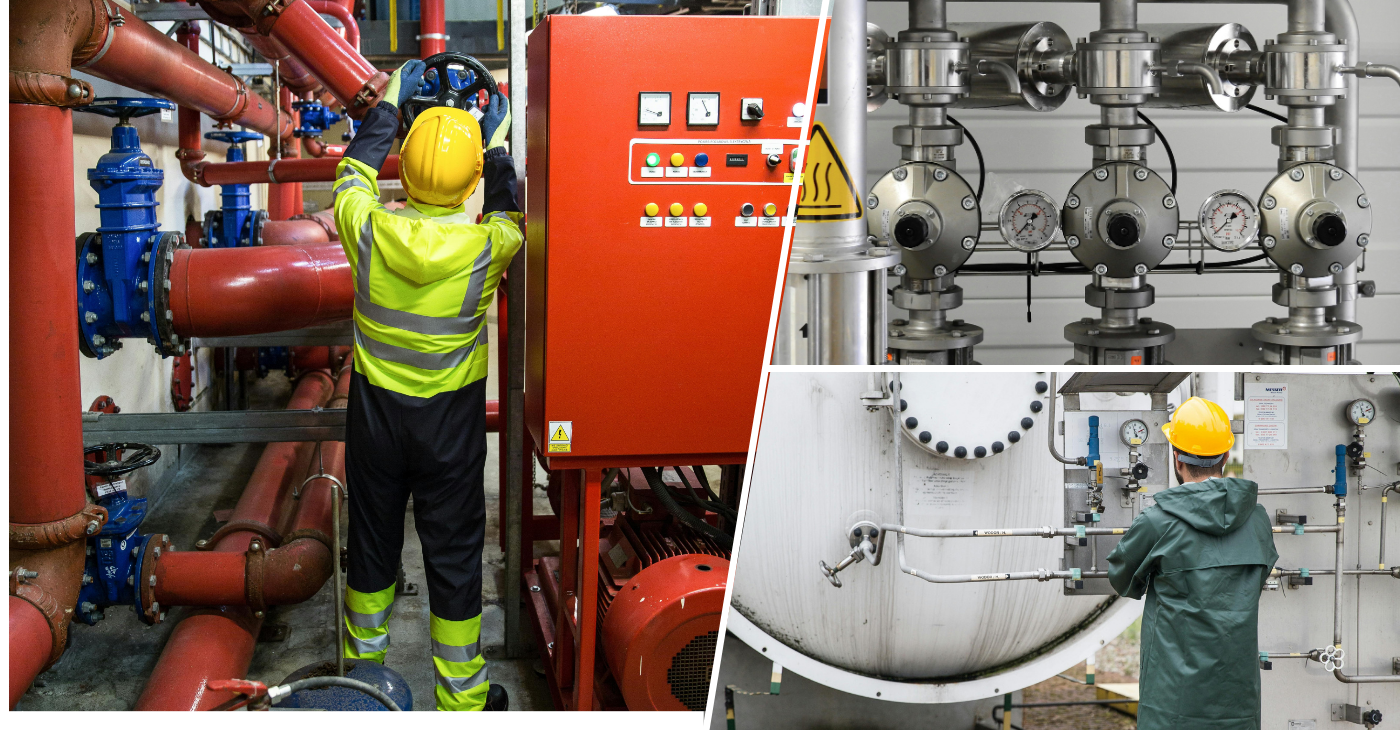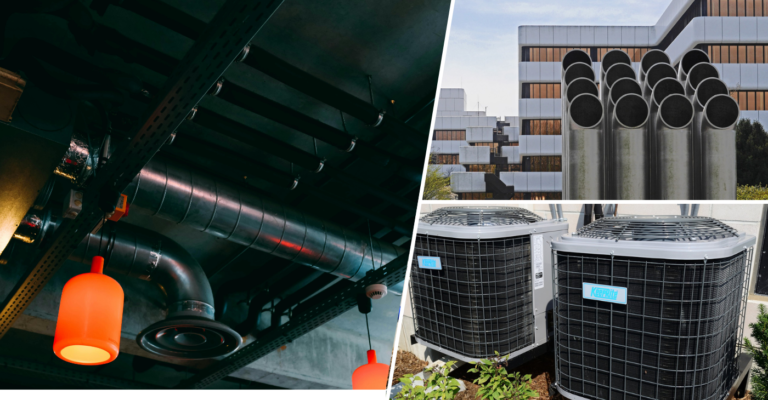7 Types of expansion valves that will revolutionise your system
7 types of expansion valves are essential for controlling refrigerant flow in HVAC and refrigeration systems. Picking the right valve ensures better system performance, energy savings, and longer equipment life. In this article, we’ll explore 7 types of expansion valves. Each one has unique advantages and specific uses, from large commercial buildings to small residential systems. Understanding these valves will help optimise the design and efficiency of your projects.
How expansion valves work
Expansion valves regulate refrigerant pressure between the condenser and evaporator. They drop the refrigerant’s pressure, allowing it to absorb heat efficiently. This process is vital for effective cooling or heating.
Different types of valves work in various ways. Manual valves need direct adjustments. TXVs use sensors to automatically adjust refrigerant flow based on heat loads. Electronic Expansion Valves (EEVs) provide even greater control using real-time data.
These valves protect the compressor by ensuring only vapor reaches it. Preventing liquid refrigerant from entering the compressor avoids costly damage. Proper valve operation is crucial for long-term system stability.
The importance of expansion valves in HVAC systems
Expansion valves are critical in controlling refrigerant flow. They regulate the pressure of refrigerant as it moves from the condenser to the evaporator. This control ensures that the system cools or heats efficiently.
These valves prevent issues like compressor overload by managing the amount of refrigerant entering the evaporator. Proper refrigerant control reduces wear on HVAC components, which extends the system’s life. They are especially important in maintaining smooth operation in large HVAC setups.
Choosing the right valve can lead to significant energy savings. Valves such as TXVs adjust to system demands, optimizing efficiency. By reducing energy waste, they improve overall system performance, particularly in buildings with varying cooling needs.
1. Thermostatic expansion valve (TXV)
The Thermostatic Expansion Valve is one of the most commonly used among the 7 types of expansion valves. They regulate refrigerant flow based on the cooling demand by monitoring temperature. This makes them ideal for buildings where cooling needs fluctuate, such as office buildings or hotels. TXVs adjust the flow automatically, ensuring efficient system performance.
These valves are known for their precision. By controlling superheat, they prevent the compressor from overloading or freezing. 7 types of expansion valves extends the life of the system and lowers energy consumption. TXVs are particularly useful in buildings that prioritise energy efficiency, such as green buildings or LEED-certified projects.
In large construction projects, TXVs can handle the demands of multi-zone systems. They maintain stable performance across different areas of the building, even when each zone has unique cooling needs. This versatility makes them essential for high-performance HVAC systems in modern commercial or multi-family residential buildings.
2. Electronic expansion valve (EEV)
Electronic Expansion Valves (EEVs) bring cutting-edge technology to HVAC systems. They use sensors to monitor temperature and pressure in real-time, adjusting refrigerant flow instantly. This level of control makes EEVs perfect for environments with rapidly changing loads, such as hospitals or data centres. They offer more precise control than mechanical valves.
EEVs can integrate with advanced building management systems (BMS). This allows for automated adjustments based on real-time data, ensuring peak efficiency. EEVs are key in high-tech smart buildings where energy optimization is a priority. They provide seamless adjustments that reduce energy waste and maintain system stability.
EEVs also stand out among the 7 types of expansion valves for their quick response to load changes. Because they work with a wide range of refrigerants, EEVs offer flexibility in HVAC system design. This makes them ideal for projects focusing on sustainability. In large-scale commercial buildings, EEVs help maintain a balance between comfort and efficiency, ensuring that the system operates optimally under varying conditions.

3. Automatic expansion valve (AXV)
Automatic Expansion Valves (AXVs) are best suited for systems where cooling loads stay consistent. These valves maintain a constant evaporator pressure, making them ideal for refrigeration systems in grocery stores, small freezers, or cold storage units. They don’t adjust to load changes, so they work well in environments with stable demand.
AXVs are easy to install and require minimal maintenance, making them a cost-effective option in smaller-scale construction projects. They are frequently used in retrofits or systems that don’t need the complexity of advanced control valves. This simplicity reduces upfront costs while ensuring reliable system performance.
However, AXVs are not designed for large buildings with fluctuating loads. For such environments, more sophisticated systems like TXVs or EEVs are recommended. In smaller, more predictable environments, AXVs offer a practical, budget-friendly solution for maintaining cooling efficiency.
4. Capillary tube
The Capillary Tube is the simplest of the 7 types of expansion valves, often used in small refrigeration systems. It controls refrigerant flow through a long, narrow tube that creates pressure drop. While not adjustable, it’s a low-cost, reliable option for applications like window air conditioners or small refrigerators.
Due to its simplicity, it’s perfect for small-scale or budget-conscious construction projects. It doesn’t have moving parts, which means fewer maintenance concerns and longer-lasting performance. Capillary tubes are often used in systems where cooling demand is constant and doesn’t fluctuate.
However, capillary tubes are limited in their application. They don’t provide the level of control that TXVs or EEVs offer. For more complex systems, especially those with variable loads, a more advanced valve is needed. In smaller residential or commercial installations, capillary tubes remain a durable and cost-efficient choice.
5. Float valves
Float valves are essential in large refrigeration systems, such as those found in industrial cold storage facilities. They regulate refrigerant flow based on the liquid level in the evaporator. By preventing liquid refrigerant from entering the compressor, they protect the system from damage, ensuring long-term performance.As one of the 7 types of expansion valves, float valves ensure stable operation in heavy-duty systems.
These valves are often used in food processing plants or large commercial refrigeration systems. They are critical for maintaining efficiency in systems with significant refrigerant volumes. Float valves automatically adjust refrigerant flow, ensuring stable operation under heavy load conditions.
In construction, float valves are a go-to solution for large-scale cooling projects. They ensure the refrigeration system operates smoothly without constant supervision. This makes them ideal for industrial applications where system reliability is paramount, such as in pharmaceutical or food production plants.

6. Manual expansion valve
Manual Expansion Valves are unique among the 7 types of expansion valves for their hands-on control. Unlike automatic valves, these require manual adjustment to regulate refrigerant flow. They are often used in systems where real-time adjustments are necessary, such as in testing environments or temporary setups during the commissioning phase of a construction project.
These valves are useful in niche applications where automatic control isn’t needed. They allow for real-time tweaking during system setup or troubleshooting. While not common in permanent installations, they are often used during the initial stages of a system’s operation to fine-tune performance.
Manual valves are a low-cost solution for systems that don’t require continuous monitoring. They are typically phased out once more advanced controls are installed but provide essential support in the early stages of system testing and calibration. They offer flexibility in environments where precise control over refrigerant flow is necessary.
7. Externally equalised valves
Externally equalised valves are used in systems where the pressure drop across the evaporator is significant. They utilise an external pressure line to balance refrigerant flow, ensuring optimal performance in larger HVAC systems. These valves are commonly found in commercial and industrial buildings where multiple zones require stable cooling.
They are ideal for large-scale projects like high-rise buildings, hospitals, or manufacturing facilities. In these settings, pressure imbalances can lead to inefficiencies or system failure. Externally equalised valves help maintain balance, allowing for consistent refrigerant flow and temperature control.
For construction professionals, externally equalised valves are a smart choice for high-performance HVAC installations. They provide the control needed to manage large, complex systems where precision and efficiency are key. This ensures long-term operational stability in demanding environments, making them crucial for large-scale cooling projects. Their role in maintaining balance across multiple zones highlights their importance within the 7 types of expansion valves used in today’s construction projects.
Selecting the right expansion valve for your project
Several factors affect valve choice. Consider building size, refrigerant type, and load variability. In larger buildings, TXVs or EEVs provide flexibility. Smaller systems may work with simpler valves like Capillary Tubes.
Building size and cooling demand also influence valve selection. Large buildings with fluctuating loads need valves that adjust in real-time. Smaller structures with stable demand can use more basic options.
Proper sizing and installation are key. The valve must fit the system’s capacity, and installation should follow best practices. Correct placement ensures the valve functions efficiently, improving overall system performance.
Conclusion: Boosting system efficiency in construction projects
Understanding the 7 types of expansion valves is crucial for optimizing HVAC and refrigeration systems in construction projects. Each valve type fits different project needs, from simple residential units to complex commercial setups. By choosing the right one, you can improve performance, save energy, and reduce maintenance costs. The right valve ensures your HVAC or refrigeration system runs smoothly, benefiting both the project and long-term operational success. Read more for HVAC questions and answers.







